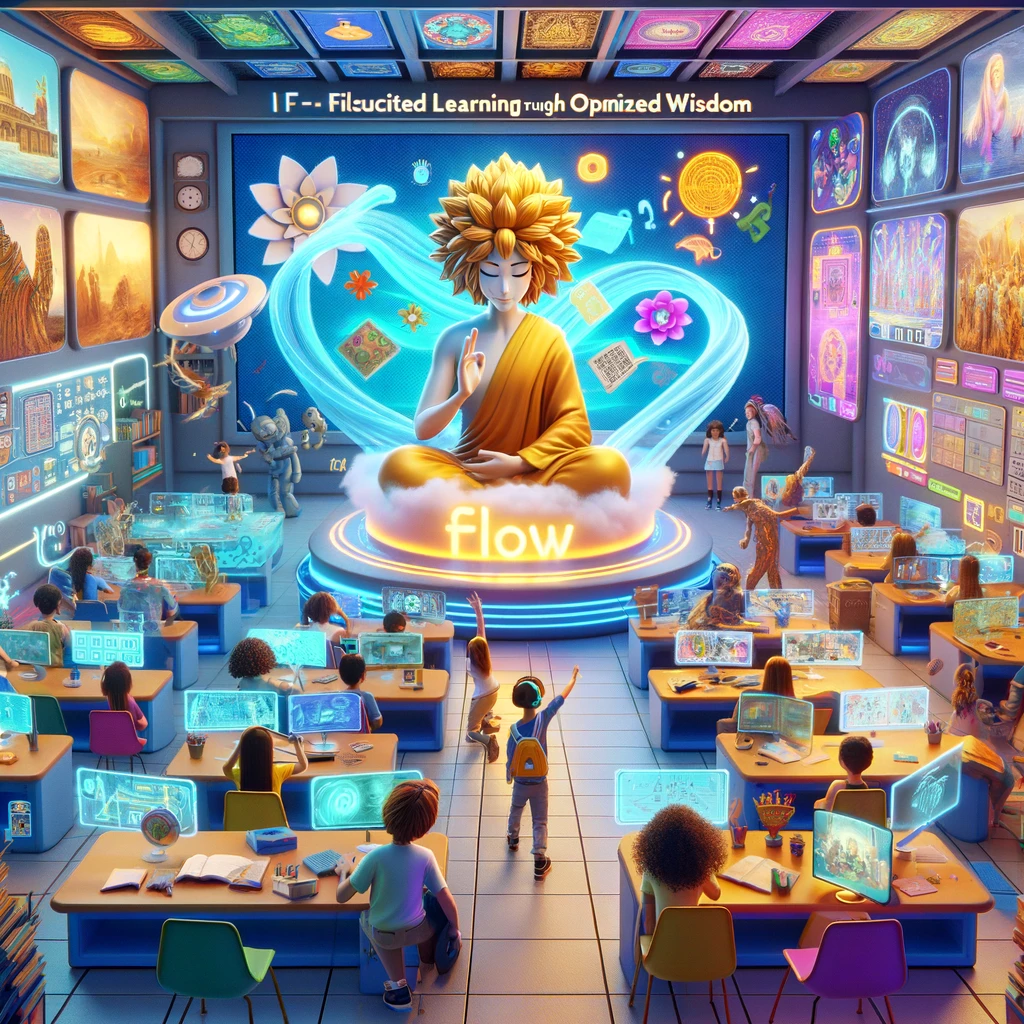Flow State and Learning: Harnessing AI to Enhance Education

In the dynamic world of K-12 education, teachers constantly seek innovative strategies to optimise learning and engage their students more effectively. One concept that has gained traction among educators is the “flow state,” a term coined by psychologist Mihaly Csikszentmihalyi. Flow state refers to a heightened state of focus and immersion that individuals experience when they are fully engaged in an activity that is both challenging and rewarding. Achieving this state can significantly enhance learning and performance, making it a valuable goal for educators. In this context, Artificial Intelligence (AI) emerges as a powerful ally, offering tools and insights that can help both teachers and students achieve and maintain a flow state in the classroom.
Understanding Flow State in Education
Flow state in education occurs when students are so absorbed in their learning activities that they lose track of time and are immune to external distractions. This optimal state of engagement occurs at the intersection of challenge and skill, where the difficulty of the task matches the learner’s ability level. For students, achieving flow means working on tasks that are neither too easy (leading to boredom) nor too difficult (causing anxiety), but that perfectly balance challenge with their current capabilities.
The Role of AI in Facilitating Flow State
Personalised Learning Paths
AI can significantly contribute to achieving flow state by enabling personalised learning. Through adaptive learning platforms, AI algorithms can analyse students’ performance data in real time, identifying individual strengths, weaknesses, and learning preferences. This analysis allows the platform to adjust the difficulty level of tasks and suggest resources tailored to each student’s needs, promoting a balanced challenge that is key to entering the flow state.
Feedback and Motivation
Immediate feedback is crucial for maintaining the flow state, as it helps learners adjust their strategies and understand their progress. AI education systems can provide instant, personalised feedback to students, keeping them engaged and motivated. Moreover, these systems can use gamification elements, such as points, badges, and leaderboards, to further enhance motivation and engagement, making learning more enjoyable and effective.
Time Management and Focus
AI tools can also assist in time management, helping students allocate their time more effectively to maintain focus. For example, AI-powered apps can track time spent on tasks, suggest breaks, and help manage distractions, creating an environment conducive to achieving flow. Additionally, AI can analyse patterns in students’ focus and productivity, offering insights and recommendations to optimise their study habits.
Enhancing Creativity and Problem-Solving
Incorporating AI into learning activities can also stimulate creativity and problem-solving skills, components of the flow state. AI-driven simulations, virtual labs, and interactive scenarios provide students with immersive, hands-on experiences that challenge them to think critically and creatively. These activities not only make learning more engaging but also build the complex problem-solving skills essential for success in the 21st century.
Conclusion
The concept of flow state holds immense potential for transforming K-12 education, making learning processes more engaging, effective, and enjoyable. By leveraging AI, educators can create personalised, adaptive learning experiences that encourage students to achieve and maintain flow, thereby enhancing their ability to learn and retain information. As AI continues to evolve, its role in education will undoubtedly expand, offering new avenues for fostering deep learning and student engagement. Embracing these technologies, teachers can cultivate an environment where the flow state is not an occasional occurrence but a regular feature of the classroom, leading to profound and lasting educational outcomes.
